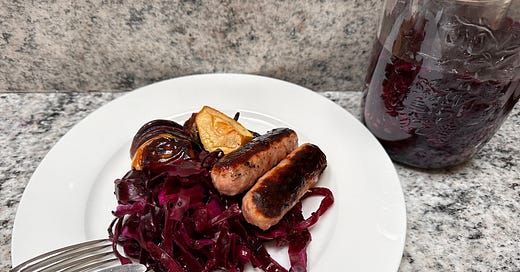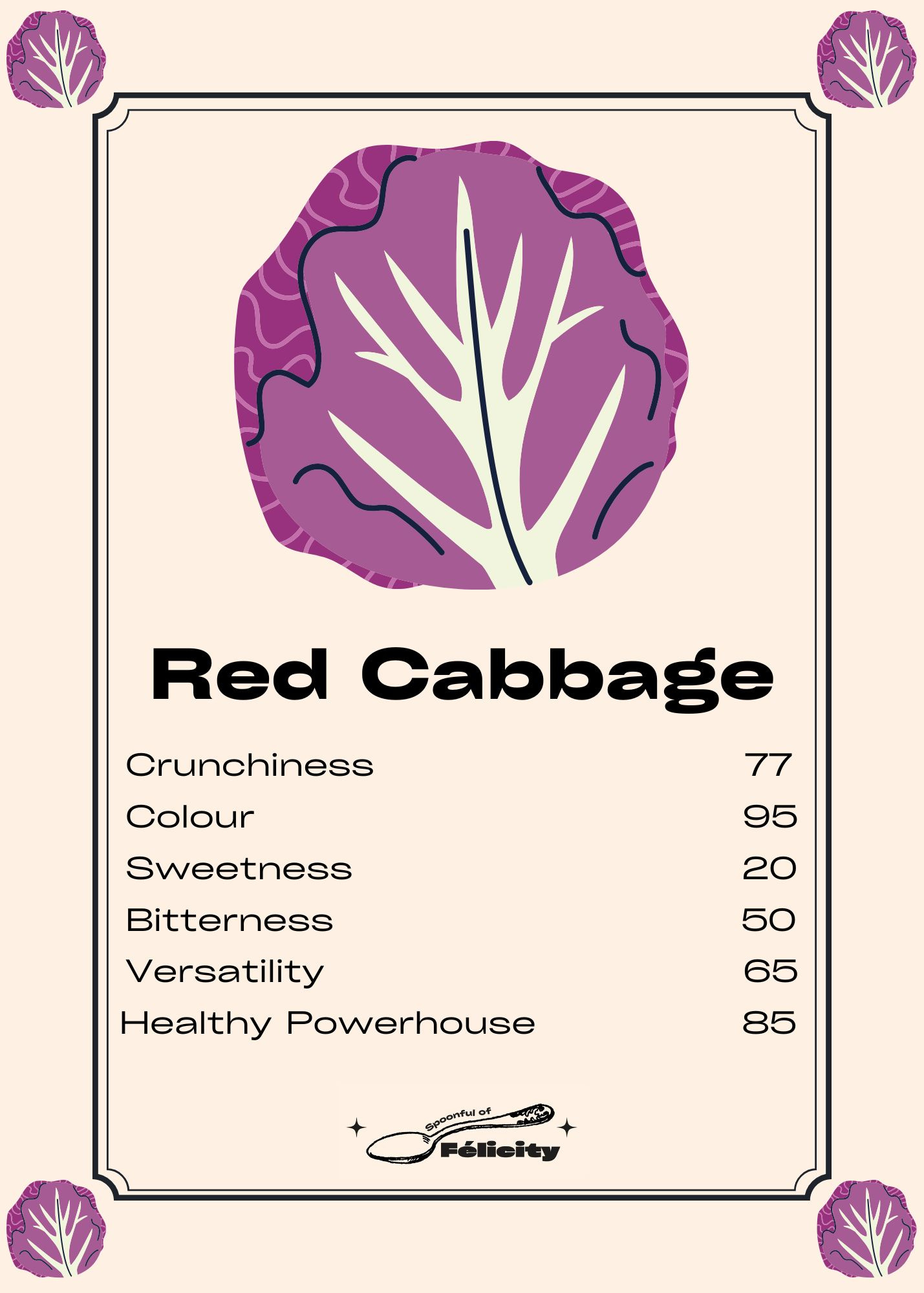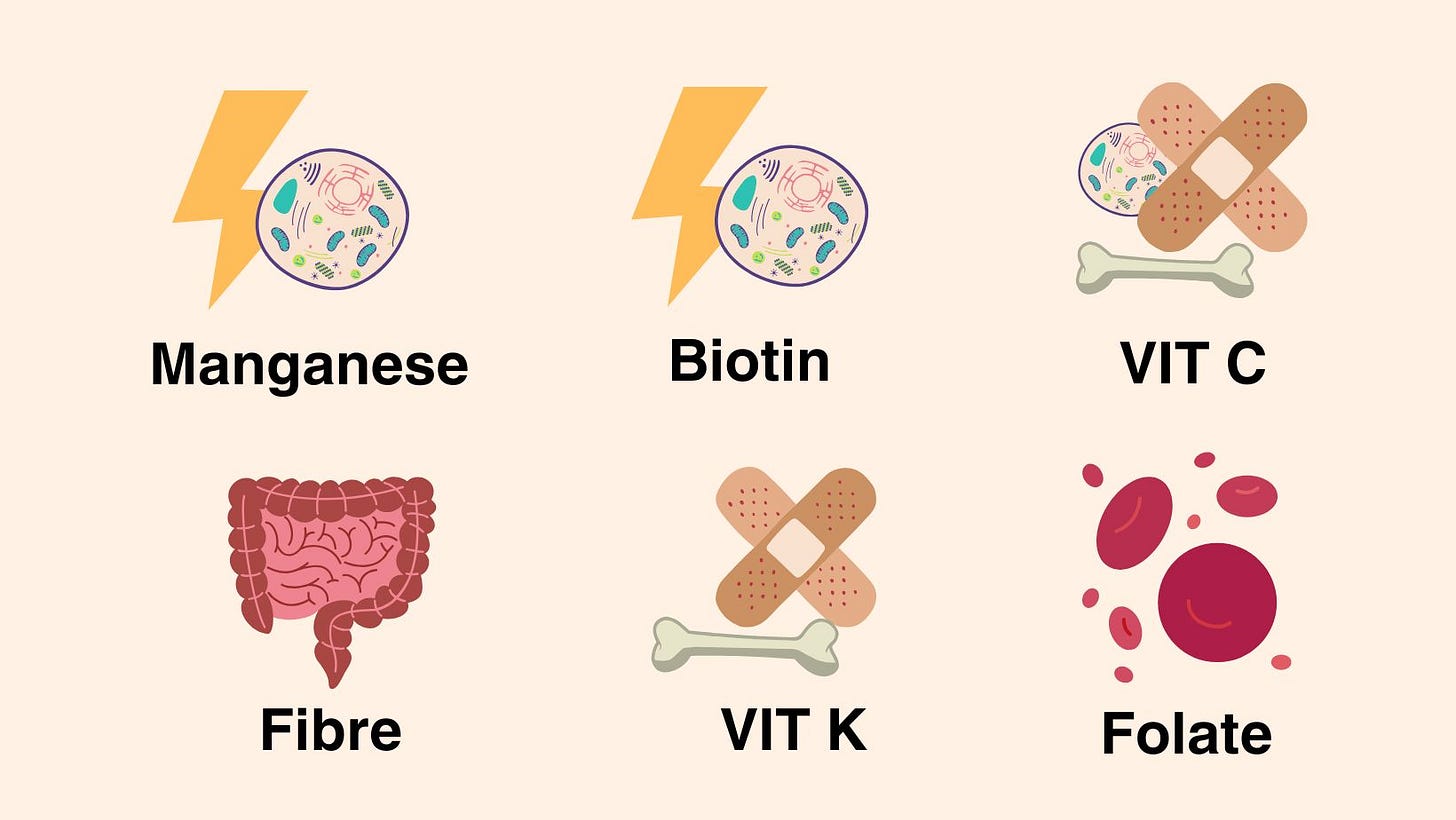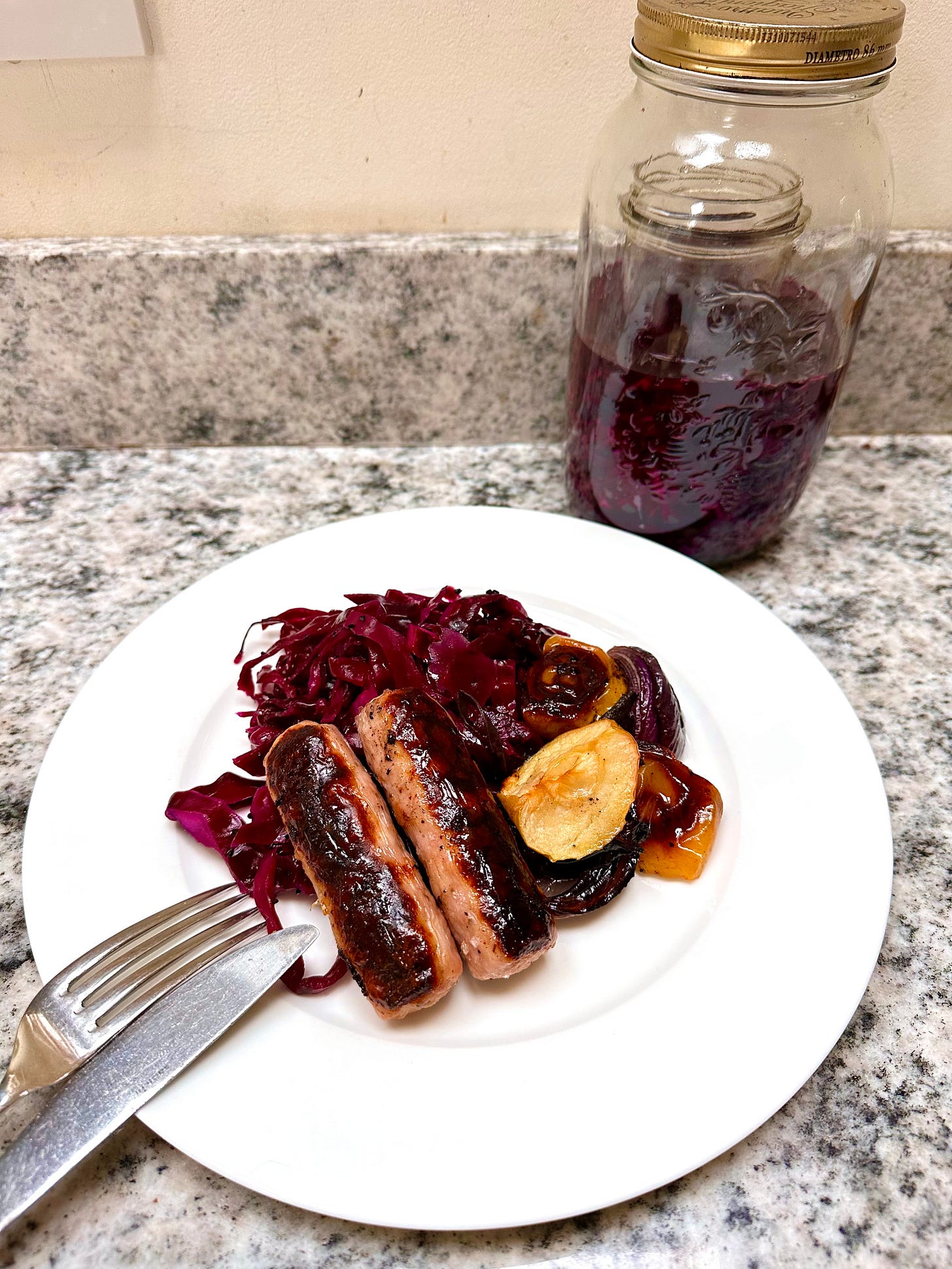November #3 - Red Cabbage and a quicker healthier version of Choucroute Alsacienne
What is choucroute? A french classic from the Alsace region, this is a proper winter warmer and requires a bit of fermenting fun.
Did you know my paid subscribers also get a recipe each week featuring the spotlight ingredient?
Paid subscribers get access to:
A new seasonal recipe every week.
A cook along video for the recipe.
A deep dive into ingredients’ benefit on health and mood.
Full access to my archive of newsletters and recipes.
You can unsubscribe in one click.
HISTORY:
Cabbage itself dates back thousands of years. As we discovered during kale week, wild leafy cabbage grew on the coastal mountains of the Mediterranean and was enjoyed throughout Antiquity for its medicinal properties and ability to nourish us cheaply throughout winter. Its distinct smell gave it the reputation of being born from a drop of Zeus’s sweat but that didn’t manage to put anyone off. Around the 8th century it was cultivated throughout Europe and Asia. We know for definite, because there is written proof, that red cabbage was cultivated in the 12th Century and it’s doubtful that it’d been around for long before then.
FUN FACTS:
Braised red cabbage started to become a staple for winter roasts and celebratory feasts in Denmark during the 1800s as, combined with boiled potatoes, the colours represented the country’s flag. (Funny how this seems to be the origin of so many foods. I think Pizza Margherita still wins that competition in my opinion). Stewed with winter spices and sugar to balance out the bitterness, and served with potatoes and a goose/duck/turkey, it is now a staple of many households for festive meals in Germany, Austria, UK and USA.
Red cabbage is also lovely shredded into a coleslaw. It got me wondering where coleslaw came from. Turns out, it originates from government campaigns during World War II, aiming to encourage the UK population to eat more homegrown produce. Brits were encouraged to shred cabbage to save on the energy used to boil it, keep more of its nutritional value, and of course popularise a vegetable which grows very easily in back gardens. Below is one of the campaign fact sheets:
Don’t waste fuel
On a vegetabuel
It’s more to your credit
To shred it.
Ministry of Food’s Food Facts No. 128The colour of red cabbage (which, let’s face it, is more purple than red) can vary depending on the acidity of the soil it grows in. The more acidic, the redder, and the less acidic, the bluer. You can experiment with this to make colour changing dishes that blow people’s socks off! When you boil red cabbage, with maybe some onion and herbs, the colour turns blue/purple. You can use this as a broth and after serving add some lemon juice, the dish will turn pink. (This is also a great trick for fun drinks as cabbage water alone doesn’t have much flavour)
HOW TO COOK THEM:
Raw: Slice thinly or grate and add to salads, coleslaw, wraps and sandwiches. In Germany, red cabbage is a traditional addition to kebab pitta wraps. Alternatively, try making my sauerkraut recipe further down on this post.
Cooked:
Thinly slice and braise (simmer with the lid on) with apple juice, orange zest and warm spices until tender. Stir in a bit of cranberry juice before serving with something like duck, beef or salmon.
Slice into chunks and add to a mix of vegetables for a stir fry.
Add chunks to a casserole with pork, apple and onion to slow cook in the oven.
Red cabbage pairs particularly well with potatoes or pumpkins; citrus and especially oranges and clementines; other winter fruit such as apples, pears and cranberries; warm spices such as nutmeg, cinnamon, allspice, ginger; other spices and herbs such as smoked paprika, sage, juniper, dill and rosemary; sweetness to balance out the bitterness with honey, maple syrup or brown sugar; meat such as beef, pork and especially game.
MOOD FOOD - HAPPY:
Folate - is linked to levels of serotonin, our good mood hormone often linked to a feeling of serenity; and not having enough folate increases the chance of feeling depressed;
Vitamin C - is involved in converting dopamine to noradrenaline - low amounts of noradrenaline are associated with depression;
Vitamin K - Initial studies have shown promising results of a significant inverse relationship between vitamin K and depressive symptoms;
Anthocyanins - inhibit MAO which breaks down dopamine. Excess MAO can sometimes be the cause of depression;
This week’s recipe for paid subscribers:
Red cabbage sauerkraut with roasted sausages, onion and apple. My ultimate choucroute.
This is my take on a Choucroute Alsacienne, a traditional french recipe consisting of warm sauerkraut and a lot of pork meat. I've made it lighter and more nutritious without losing the comforting factor. Serve it up with mustard on a cold night.
Ingredients (serves 4):
Keep reading with a 7-day free trial
Subscribe to Spoonful of Felicity to keep reading this post and get 7 days of free access to the full post archives.






